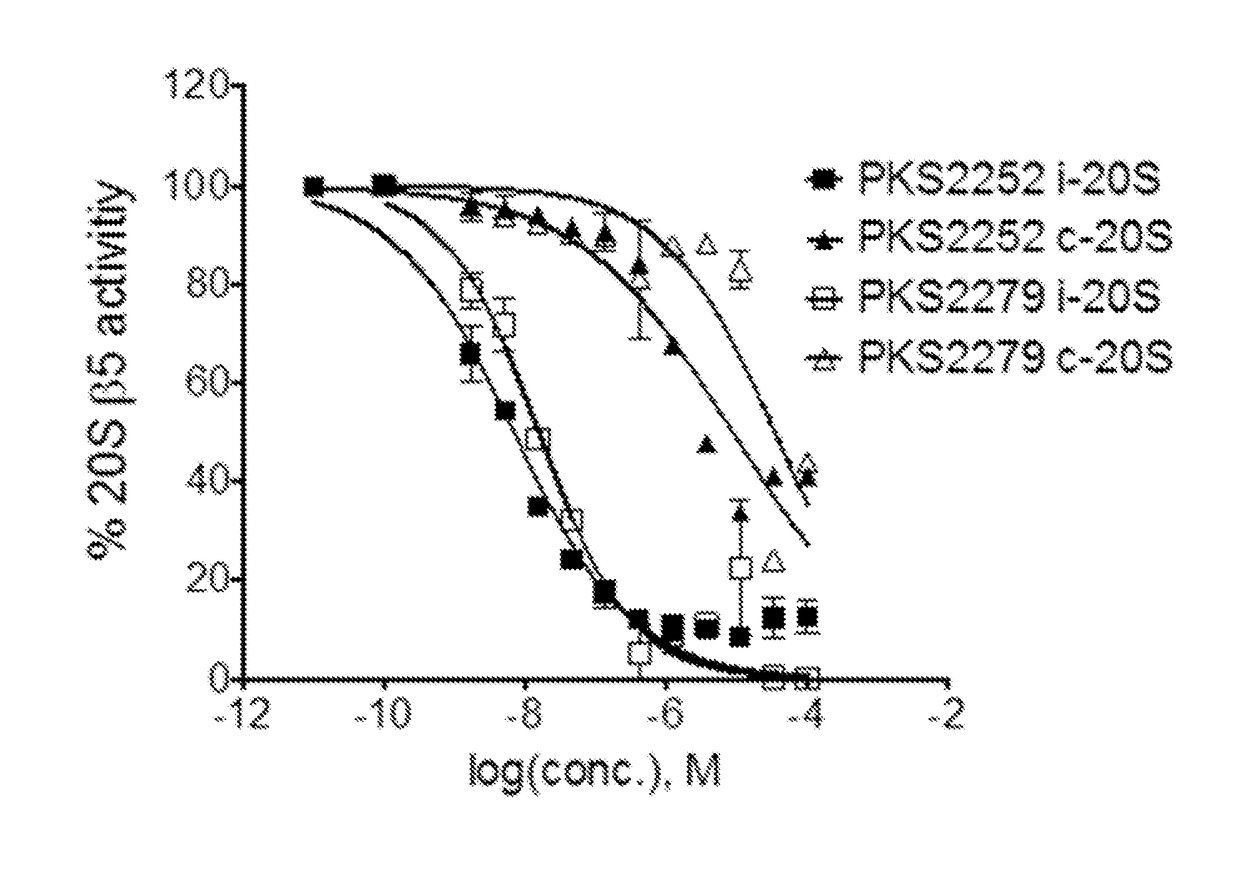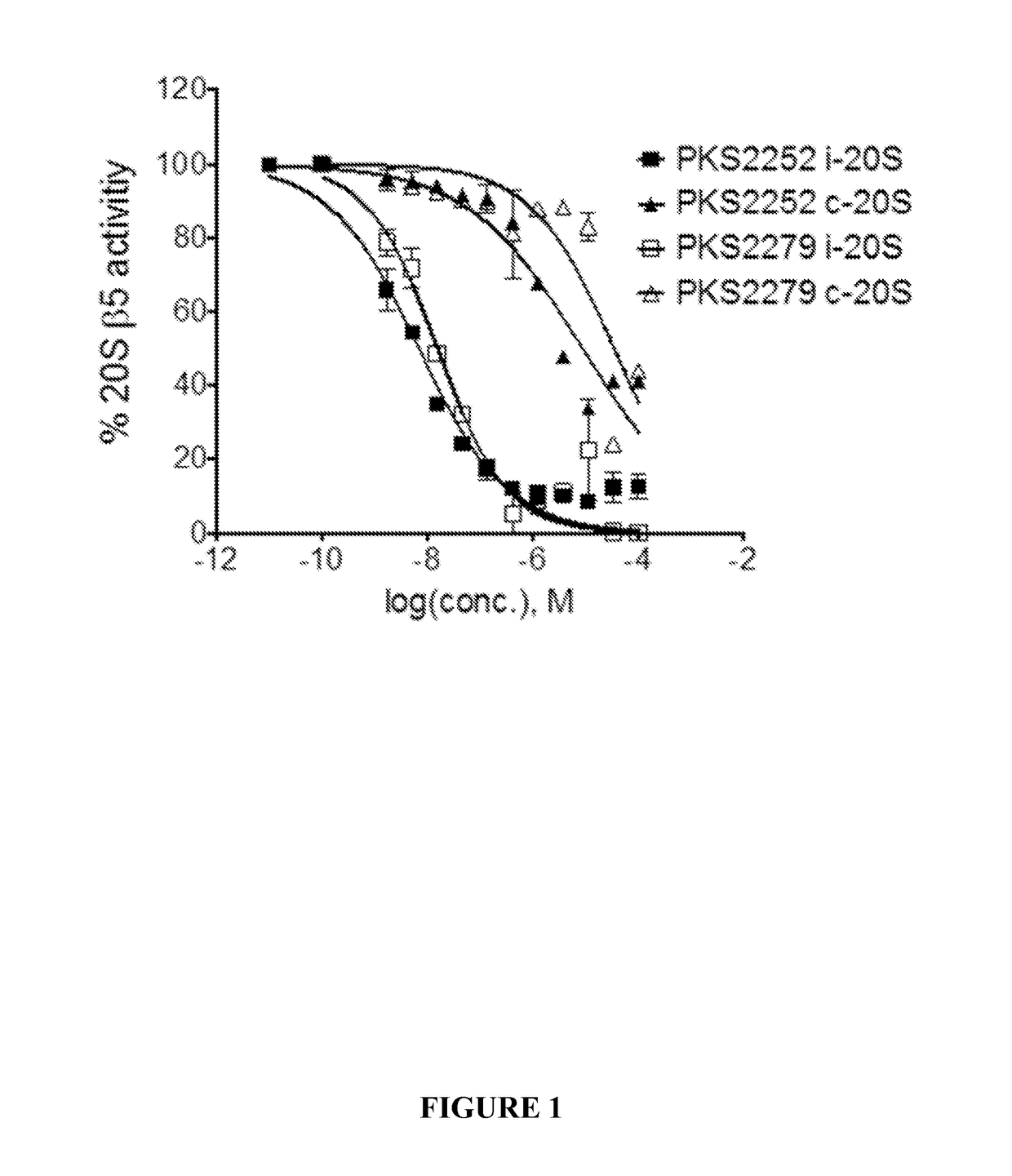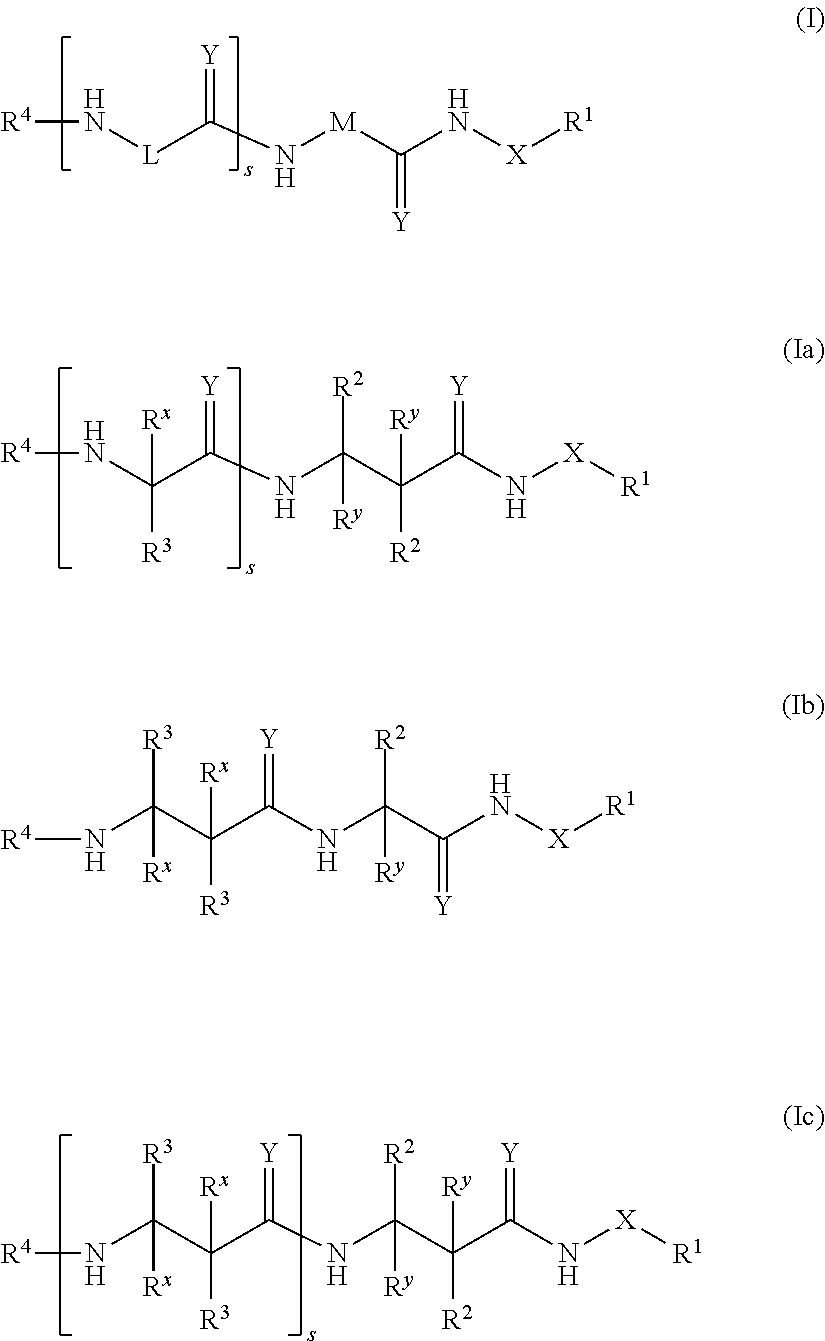Dipeptidomimetics as inhibitors of human immunoproteasomes
a technology of immunoproteasome and dipeptidomimetics, which is applied in the direction of peptide/protein ingredients, immunological disorders, drug compositions, etc., can solve the problems of large toxicity of broad-spectrum inhibitors, inability to reversibly act, and inability to detect and treat non-malignant diseases, etc., to achieve less toxicity and high selectivity
- Summary
- Abstract
- Description
- Claims
- Application Information
AI Technical Summary
Benefits of technology
Problems solved by technology
Method used
Image
Examples
example 1
rocedure for HATU Coupling
[0252]Carboxylic acid (1.0 eq.), O-(7-Azabenzotriazol-1-yl)-N,N,N,N′-tetramethyluronium hexafluorophosphate (HATU) (1.2 eq.), and 1-Hydroxy-7-Azabenzotriazole (HOAt) 0.6M in DMF (1.0 eq.) were dissolved in DMF under argon atmosphere. The solution was cooled to 0° C. and amine was added. After stirring for 5 minutes at 0° C., Hünig's base (3-4 eq.) was added. The reaction mixture was stirred at 0° C. for 1 hour. After completion of reaction (1 hour, monitored by LCMS), water (10 mL) was added to reaction mixture and stirred 30 minutes. Product was isolated either by ethyl acetate extraction or filtering the precipitate.
example 2
rocedure for EDC Coupling
[0253]Carboxylic acid (1.0 eq.), N-(3-Dimethylaminopropyl)-N′-ethylcarbodiimide hydrochloride (EDC) (1.2 eq.), and 1-Hydroxybenzotriazole (HOBt) (1.3 eq.) were dissolved in DMF under argon atmosphere. The solution was cooled to 0° C. and tert-butylamine was added. After stirring for 5 minutes at 0° C., Hünig's base (2-3 eq.) was added. The reaction mixture was allowed to warm to room temperature slowly and stirred at room temperature overnight.
example 3
rocedure for Boc-Deprotection
[0254]The substrate was dissolved in dichloromethane and the solution was cooled to 0° C. Trifluoroacetic acid (20% v / v with respect to dichloromethane) was added to the solution drop wise at 0° C. with constant stirring. The mixture was allowed to warm to room temperature slowly (over a period of 1 hour), and stirred until the completion of reaction (monitored by LCMS). Excess trifluoroacetic acid and dichloromethane were evaporated and crude was dried under vacuum.
PUM
| Property | Measurement | Unit |
|---|---|---|
| temperature | aaaaa | aaaaa |
| temperature | aaaaa | aaaaa |
| molecular structure | aaaaa | aaaaa |
Abstract
Description
Claims
Application Information
 Login to view more
Login to view more - R&D Engineer
- R&D Manager
- IP Professional
- Industry Leading Data Capabilities
- Powerful AI technology
- Patent DNA Extraction
Browse by: Latest US Patents, China's latest patents, Technical Efficacy Thesaurus, Application Domain, Technology Topic.
© 2024 PatSnap. All rights reserved.Legal|Privacy policy|Modern Slavery Act Transparency Statement|Sitemap



